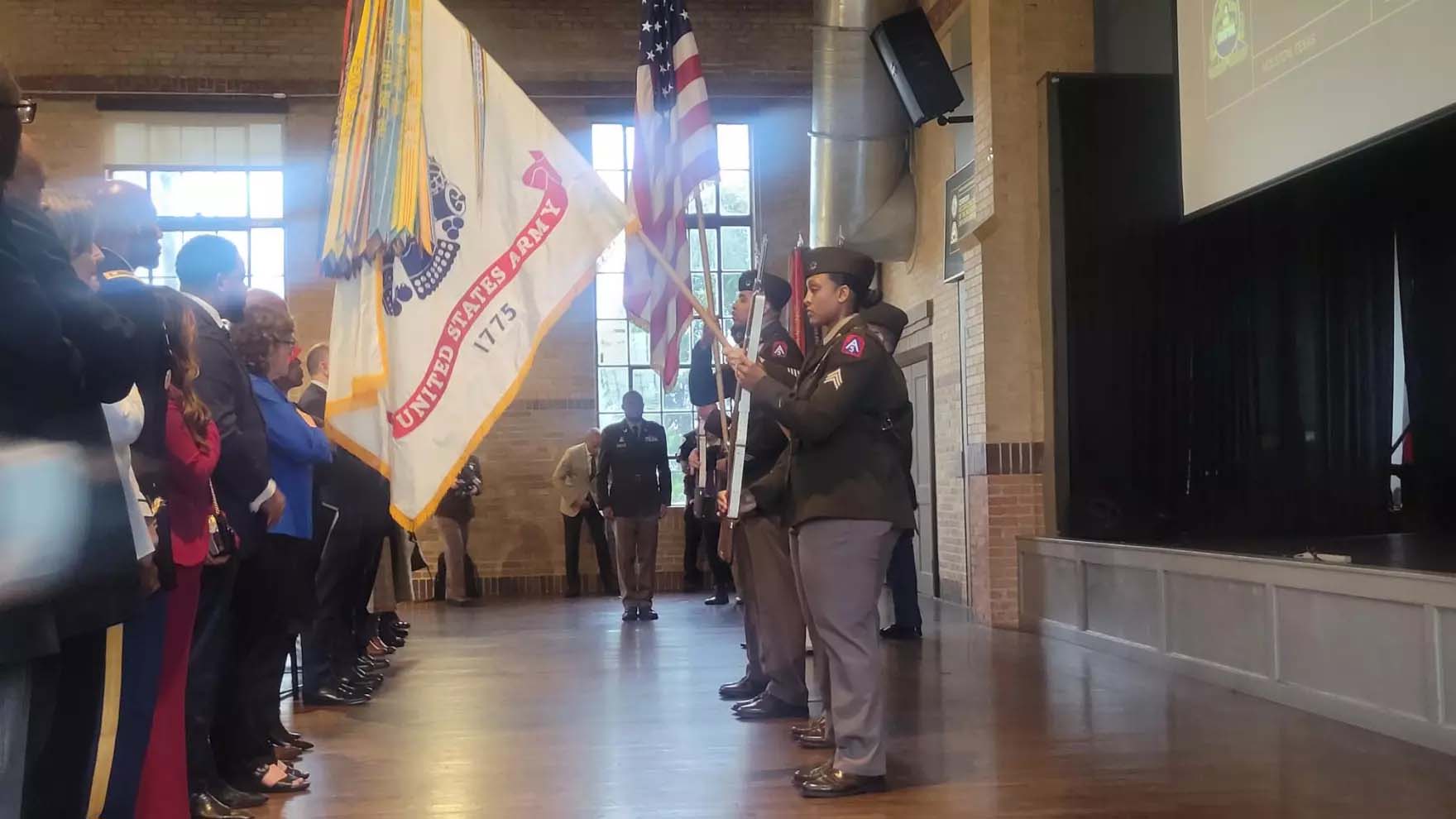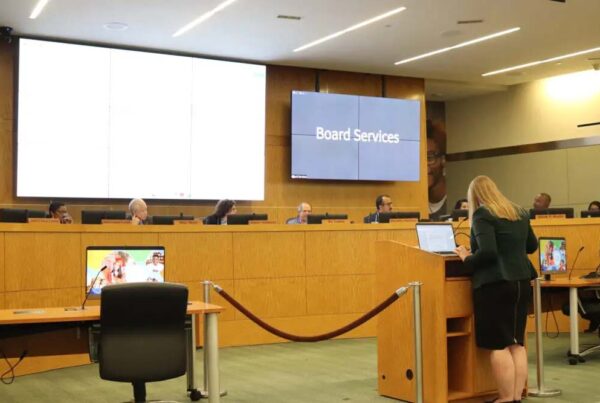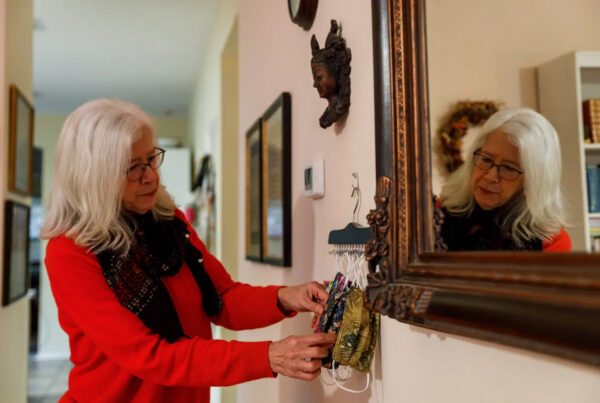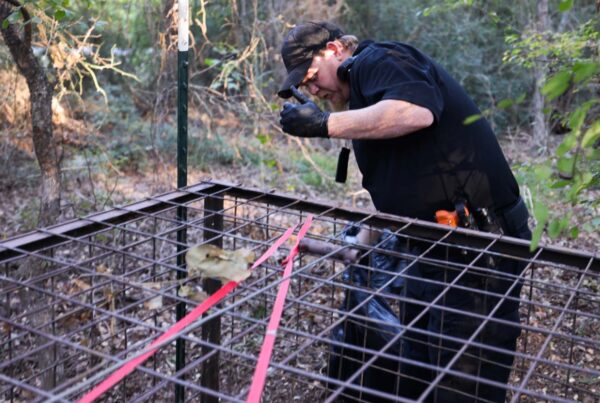In December 1917, more than 100 Black U.S Army infantryman were convicted of crimes, including mutiny, related to a riot in Houston earlier that year. Civilians, soldiers and Houston police officers were killed during the chaos. Nineteen of the convicted soldiers were executed.
On Monday, the Army announced that it would grant clemency to the 110 Black soldiers convicted of crimes in the riot – 106 years after the fact.
Sig Christenson, military and veterans reporter for the San Antonio Express-News, joined the Standard to share more about the new development.
This transcript has been edited lightly for clarity:
Texas Standard: First, can you give us some details about what led to this riot in 1917?
Sig Christenson: Well, it started with the very decision to have the soldiers moved there. Houston was a very racist city in 1917. People were concerned almost immediately that this was going to be an error of some size. And in fact, there was a commander who basically wrote a letter and said, please don’t do this. And yet the Army did.
And very quickly, people began to have confrontations. White people did not like the fact that Black soldiers were wearing uniforms, that these Black soldiers were military police. They had no respect for them, and they treated them badly. The Houston police in particular treated them badly.
And on the day that the violence occurred, there was an incident involving some soldiers who were playing craps. The police chased after them. They beat them up. They met another M.P. who was on duty, Corporal Baltimore, and Corporal Baltimore was talking to these officers about what happened, and they beat him up.
The word gets back to the soldiers’ encampment that Corporal Baltimore has been killed. And right away, there’s a lot of talk. People are angry about it, and they want to get revenge. Baltimore shows up later, badly bloodied but alive. And things seem to calm down for a while.
But then there is something that happens at some point where someone hears a shot and they believe they are under attack in their camp, and the soldiers get their guns and they start shooting. And so there are a number of people who get killed just from this rifle fire. The soldiers then go in the town, and they clash with the whites. And both soldiers and police were killed, as well as civilians.
What’s really interesting about this is that when the trial comes along, they’re convicted, even though there isn’t one eyewitness who identifies anybody. It was a dark and rainy night; nobody saw much of anything. And yet 63 soldiers tried together, represented by one man – a major who was not even a lawyer – were convicted of a number of crimes, including murder and mutiny.
And ultimately, what happened is that the Army came to the conclusion that none of these guys got a fair trial.
» GET MORE NEWS FROM AROUND THE STATE: Sign up for Texas Standard’s weekly newsletters
Let’s focus in on that push for clemency – was this an effort that started within the Army itself?
No, sir. The effort began with three people: Geoffrey Corn – he was at the time a professor at South Texas College of Law; Clyde Lemon, who chaired the NAACP veterans and military section in Houston; and Angela Holder, a Houston Community College professor.
They had been working to win pardons for the executed soldiers. And just so you know, Angela Holder is related to Cpl. Jessie Moore; he was one of the first soldiers hanged at Fort Sam Houston. So Corn gets with them and helps them figure out what to do next. And what they need to do is to actually seek clemency, not pardons.
And so Corn brings Dru Brenner-Beck, a retired Army lawyer who lives in Denver, and she heads the clemency initiative, along with a guy named John Haymond. John Haymond is a historian. And these two particularly developed the clemency petition that the Army bases its decision on.
You got a chance to speak to some of the relatives, I understand, of people who are living now. Can you give me a sense of some of the things you heard?
One of these people is Charles Anderson. He’s a descendant of Sgt. William Nesbit. He served in the Punitive Expedition under General Pershing in Mexico, and he was one of the first 13 soldiers to be executed. Mr. Anderson told me that the soldiers should never have been sent to Houston. He told me: “I feel like, yes, this is some justice for them. You wish things hadn’t have happened the way they did. But like I said, it’s just the climate. Back then, it was unbearable for them to go through this type of racism and the things that sparked this incident.”
There were riots and violence involving citizens and police and Black soldiers in cities around Texas from 1900 to 1917. This was an extremely racist state, and people did not tolerate Black people being equal in any way, shape or form to whites. And then to tell you what makes this worse: It’s the legal system.
So there’s a Lt. Col. Edward Kreger. He reviews the case of Pvt. Abner Davis, who was given life in prison for what happened in Houston. Well, it seems that Lt. Col. Kreger found little evidence that Davis even left the camp that night, let alone that he killed anybody. However, he was convicted of killing 14 people, if you can believe it. And his sentence was not reduced or thrown out because the Army lawyers were more concerned that other Camp Logan defendants would seek reductions in their sentences than they were in making this thing right. And so Davis served 23 years and seven months in Leavenworth, Kansas.
It was Lt. Col. William Newman who tried to change the orders sending these people from Columbus, New Mexico, to Houston. “I had already had an unfortunate experience when I was in command of two companies of the 24th Infantry at Del Rio, Texas, April 1916, when a colored soldier was killed by a Texas Ranger for no other reason than that he was a colored man, that it angered Texans to see colored men in the uniform of a soldier,” Newman wrote.
That is exactly what happened in Houston. Nineteen of them executed and 110 in all who were convicted. And not one of them may have done any of it. I mean, one of the things that people bring up is that they can’t prove that they did anything or that they didn’t do anything. What we know is that the justice system was so bad it could not be trusted to deliver a verdict that was truly just for any of these people. That’s what they fixed today.














